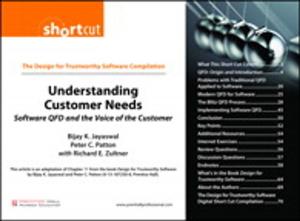Green Engineering: Environmentally Conscious Design of Chemical Processes
Environmentally Conscious Design of Chemical Processes
Nonfiction, Science & Nature, Technology, Engineering, Chemical & Biochemical| Author: | David T. Allen, David R. Shonnard | ISBN: | 9780132441858 |
| Publisher: | Pearson Education | Publication: | September 6, 2001 |
| Imprint: | Prentice Hall | Language: | English |
| Author: | David T. Allen, David R. Shonnard |
| ISBN: | 9780132441858 |
| Publisher: | Pearson Education |
| Publication: | September 6, 2001 |
| Imprint: | Prentice Hall |
| Language: | English |
A chemical engineer's guide to managing and minimizing environmental impact.
Chemical processes are invaluable to modern society, yet they generate substantial quantities of wastes and emissions, and safely managing these wastes costs tens of millions of dollars annually. Green Engineering is a complete professional's guide to the cost-effective design, commercialization, and use of chemical processes in ways that minimize pollution at the source, and reduce impact on health and the environment. This book also offers powerful new insights into environmental risk-based considerations in design of processes and products.
First conceived by the staff of the U.S. Environmental Protection Agency, Green Engineering draws on contributions from many leaders in the field and introduces advanced risk-based techniques including some currently in use at the EPA. Coverage includes:
- Engineering chemical processes, products, and systems to reduce environmental impacts
- Approaches for evaluating emissions and hazards of chemicals and processes
- Defining effective environmental performance targets
- Advanced approaches and tools for evaluating environmental fate
- Early-stage design and development techniques that minimize costs and environmental impacts
- In-depth coverage of unit operation and flowsheet analysis
- The economics of environmental improvement projects
- Integration of chemical processes with other material processing operations
- Lifecycle assessments: beyond the boundaries of the plant
Increasingly, chemical engineers are faced with the challenge of integrating environmental objectives into design decisions. Green Engineering gives them the technical tools they need to do so.
A chemical engineer's guide to managing and minimizing environmental impact.
Chemical processes are invaluable to modern society, yet they generate substantial quantities of wastes and emissions, and safely managing these wastes costs tens of millions of dollars annually. Green Engineering is a complete professional's guide to the cost-effective design, commercialization, and use of chemical processes in ways that minimize pollution at the source, and reduce impact on health and the environment. This book also offers powerful new insights into environmental risk-based considerations in design of processes and products.
First conceived by the staff of the U.S. Environmental Protection Agency, Green Engineering draws on contributions from many leaders in the field and introduces advanced risk-based techniques including some currently in use at the EPA. Coverage includes:
- Engineering chemical processes, products, and systems to reduce environmental impacts
- Approaches for evaluating emissions and hazards of chemicals and processes
- Defining effective environmental performance targets
- Advanced approaches and tools for evaluating environmental fate
- Early-stage design and development techniques that minimize costs and environmental impacts
- In-depth coverage of unit operation and flowsheet analysis
- The economics of environmental improvement projects
- Integration of chemical processes with other material processing operations
- Lifecycle assessments: beyond the boundaries of the plant
Increasingly, chemical engineers are faced with the challenge of integrating environmental objectives into design decisions. Green Engineering gives them the technical tools they need to do so.















